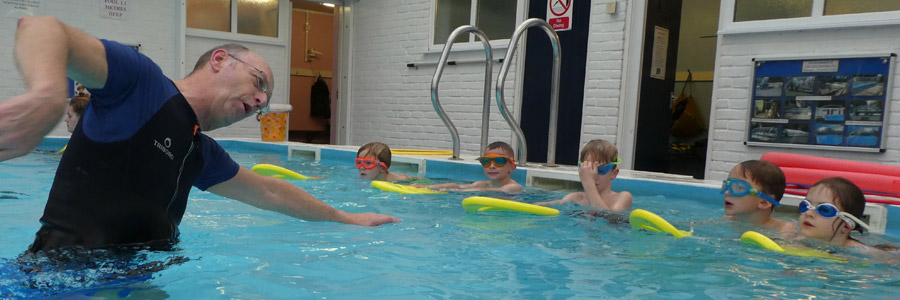
15 Apr Muscle Memory
When talking to parents about the learn to swim process we often discuss ‘muscle memory’.
But what exactly is muscle memory? To suggest the muscles in our arms and legs remember how to perform the movements for frontcrawl would be incorrect. Muscle memory is in fact:
‘the ability to reproduce a particular movement without conscious thought, acquired as a result of frequent repetition of that movement.’
As babies we learn to walk until we no longer need to think consciously about how to do it, with riding a bike its exactly the same. However, swimming requires an entirely different pattern of movement, which can make it a complex motor skill to learn.
Learning motor skills involves attempts to understand the skill being learnt, working out how to achieve the skill, and altering our movements in order to carry out the skill successfully. This skill acquisition is explained in the Three Stages of Motor Learning (Fitts and Posner, 1967)
The Cognitive Stage – this is where we develop an overall understanding of the skill. We process information to understand what to do. In this stage visual cues, verbal instructions, trial and error and feedback are very important. Characteristics of this stage in the learning process can be rapid progress in performance but inconsistent delivery, movements that are often stiff, slow and easily interrupted.
The Associative Stage – this is where we start making adjustments to how we move by altering positions and putting actions together. We transition from trying to understand what the skill is, to working out how to perform it. We can combine what we know of the skill and how it feels to attempt it and this means visual cues are less important and the focus is more on our proprioception. This learning stage is characterised by smaller progressions in performance of the skill, disjointed movement and requires lots of focus.
The Autonomous Stage – this is the final stage of the process and where the motor performance is largely automatic. There are very limited requirements for cognitive processing, instead we are able to completely switch off from what we are doing to think about or process something entirely different. This is our muscle memory.
We must remember that all individuals learn at their own pace and progression can depend on a variety of factors including how motivated the swimmer is, feedback they receive, the way in which their teaching is organised and the presence of physical or mental impairments.
To help our swimmers to understand, attempt and develop their swimming skills our teaching method is very repetitive. Building a strong understanding of the skills and providing feedback continually through the practises, ensure that only the correct technique and form are memorised.
All of our teachers use the ‘whole – part – whole’ method, which lets the swimmer try the skill, before it is broken down to improve the elements of the stroke, and then finally its attempted again as a complete stroke to consolidate the practise.
The breakdown of the stroke is important and is done so in a way that the teacher can analyse the whole body using the ‘BLABT’ method; looking first at the body position, then the legs, the arms, the breathing and finally the timing of the stroke – exercises and drills allow the swimmer to focus on parts of the stroke, feeling the difference between the incorrect and correct technique that has been adjusted.
Our tried and tested methods produces fantastic results and help our swimmers progress quickly through their learn to swim journey.


